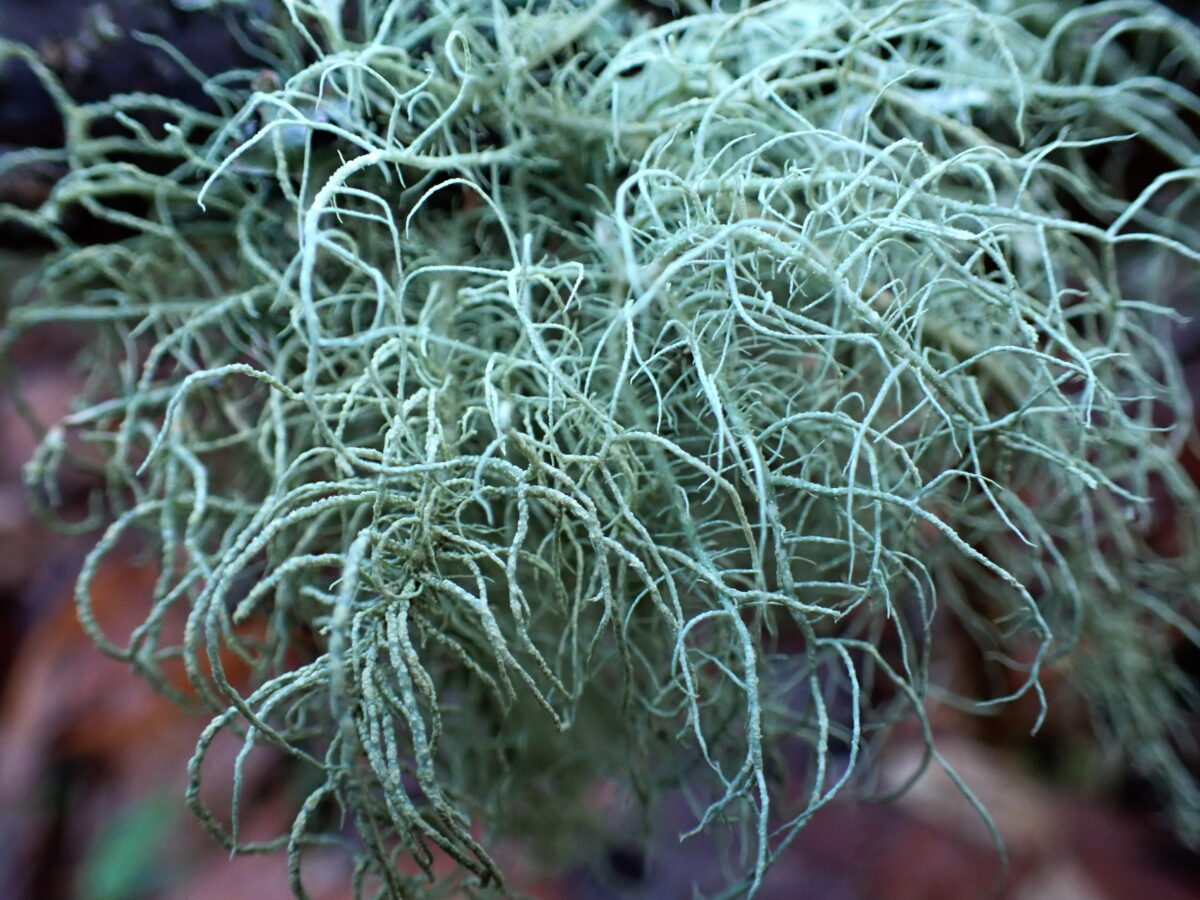Mosses and Lichens
It’s December in the Puget Lowlands. The leaves from the deciduous trees have fallen to the ground, opening the canopy, and allowing more light to reach the forest floor. That, combined with the abundant rain from the last two months, heralds the season of mosses and lichens. These ancient plants, lacking roots and vascular tissues, simply absorb water like sponges and now they awaken from their dry-season dormancy and begin photosynthesizing in the pale winter sun.
Mosses attach themselves to stable surfaces with weak, root-like rhizoids. Because they are easily dislodged (and grow slowly), most of the mosses that I notice are growing on objects like boulders or fallen logs that have not moved for a long time. Once dislodged, however, they can easily be rescued. A good time to gather them in your backyard forest* is after strong winter storms when the ground is littered with debris from trees. Fallen limbs with colonies of mosses (and lichens) can be moved to out-of-the-way spots where they can sit undisturbed. Pieces of moss-covered bark that have peeled off dead limbs can be pressed flat on patches of bare ground and anchored with small stones or chunks of wood. Unattached fragments of moss can be pushed into cracks in rocks or fallen logs.
Mosses add to the beauty of our backyard forests, but in traditional grass lawns they are routinely controlled with chemicals. Perhaps it makes more sense to simply grow moss lawns like the Japanese have done for centuries.
Like mosses, lichens can be propagated on surfaces with various blend and paint techniques. Some gardeners take advantage of their natural beauty to encourage them, especially during winter months when other plants have gone dormant.
One of the fascinating discoveries about some types of lichens, is their use of cyanobacteria to fix nitrogen. Both the fungal and algal components of lichens need nitrogen to grow, and some cyanobacteria are able to fix nitrogen, thus giving an advantage to triple symbioses.
Each colony of lichens is its own micro-ecosystem hosting a multitude of microscopic invertebrates and protozoa uniquely adapted to this niche. Like the lichens themselves, these organisms are able to survive long periods of drought in a state of suspended animation, emerging from their slumbers only when the rains return and the lichens themselves re-awaken. In this season of mosses and lichens, as we go about our routine lives, take a moment to imagine the multitudes of Lilliputian lichen worlds teeming with life in our own backyard forests.
*Please note that I do not advocate the gathering of mosses/lichens, or the transplanting of plants, anywhere other than in your own backyard forest.
